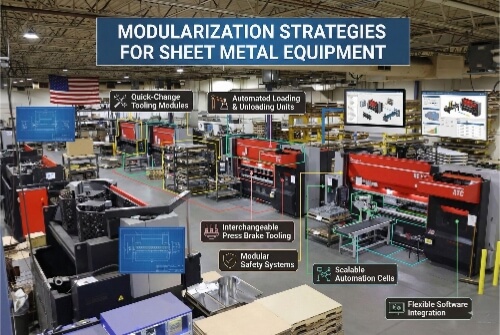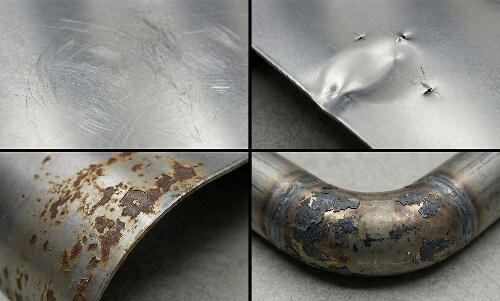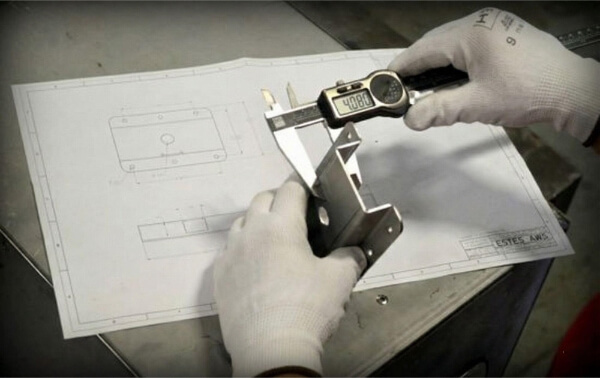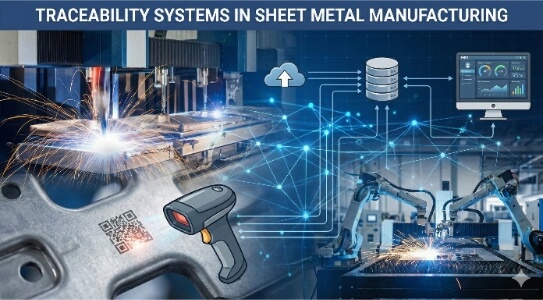Precision manufacturing demands efficient processes. CNC roughing is a crucial step in metal fabrication that often goes unnoticed. This powerful technique shapes raw materials into near-final forms, setting the stage for smooth finishing operations. But what exactly is CNC roughing, and why does it matter?
CNC roughing is the initial machining phase that rapidly removes large amounts of material from a workpiece. It creates a rough outline of the final part, leaving excess material for subsequent finishing operations. This process significantly reduces overall machining time and tool wear.
Let’s explore the critical aspects of CNC roughing and how it revolutionizes modern manufacturing. We’ll uncover the benefits, techniques, and cutting-edge technologies that make this process indispensable in today’s fast-paced production environment.

What is CNC Roughing?
Definition of CNC Roughing
CNC roughing is a high-speed material removal process. It’s the first step in CNC machining, where we quickly shape raw stock into a rough form of the final part.
The goal is to remove as much excess material as possible quickly. We use specialized cutting tools and toolpaths to achieve this. The result is a workpiece close to the desired shape but with extra material left for finishing.
Roughing prioritizes speed over precision. We focus on efficient material removal rather than surface quality or tight tolerances. This approach saves time and reduces wear on finishing tools.
Preparing for CNC Roughing
Selecting the Right Machine
Choosing a suitable CNC machine for roughing is crucial. Here are vital factors to consider:
- Power and rigidity: Roughing demands high cutting forces. Select a machine with ample power and a rigid structure.
- Spindle speed: Higher spindle speeds allow for faster material removal. Look for machines with robust, high-speed spindles.
- Axis travel: Ensure the machine has sufficient axis travel to accommodate your workpiece size.
- Tool changing capability: Automatic tool changers speed up the process for complex parts requiring multiple tools.
- Coolant system: Effective cooling is vital for roughing. Choose a machine with a robust coolant delivery system.
Materials and Tools for CNC Roughing
Selecting the suitable materials and cutting tools is critical to successful roughing:
Materials:
- Metals: Steel, aluminum, titanium, and other alloys are common in CNC roughing.
- Plastics: High-density plastics can also be roughed using CNC processes.
- Composites: Advanced materials like carbon fiber composites require specialized roughing techniques.
Cutting Tools:
- Carbide end mills: Durable and heat-resistant for high-speed roughing.
- Indexable insert cutters: Offer quick replacement of worn cutting edges.
- Roughing end mills: Feature aggressive tooth geometry for rapid material removal.
- High-feed cutters: Enable fast feed rates for efficient roughing of large surfaces.
Setting Up Your CNC Machine
Follow these steps to set up your CNC machine for roughing:
- Load the workpiece: Secure the raw material firmly in the machine’s work-holding device.
- Install cutting tools: Mount the appropriate roughing tools in the tool carousel or spindle.
- Set work coordinates: Establish the workpiece coordinate system for accurate machining.
- Input the program: Load or create the CNC program with roughing toolpaths.
- Verify toolpaths: Simulate to check for potential collisions or errors.
- Set cutting parameters: Adjust spindle speed, feed rate, and depth of cut for optimal roughing.
- Activate coolant: Ensure proper coolant flow to manage heat and chip evacuation.
- Run a test cut: Perform a trial run on a small section to verify settings.
- Begin full roughing: Start the entire roughing operation once you are satisfied with the test.

CNC Roughing Techniques
Basic CNC Roughing Strategies
CNC roughing employs several effective strategies:
- Parallel roughing: Cuts follow parallel lines across the workpiece. It’s simple and effective for flat surfaces.
- Contour roughing: The tool follows the part’s contours. This works well for curved or irregular shapes.
- Plunge roughing: The tool plunges vertically into the material. It’s useful for deep pockets or cavities.
- Step-over roughing: The tool moves in a series of overlapping passes. This ensures even material removal.
- Adaptive clearing: An advanced strategy that adjusts the toolpath based on material conditions.
Advanced Techniques in CNC Roughing
To optimize speed and tool life, consider these advanced techniques:
- Trochoidal milling: The tool moves in circular arcs. This reduces tool engagement and allows higher feed rates.
- High-speed machining (HSM): Uses lighter cuts at higher speeds. It reduces heat generation and tool wear.
- Dynamic milling: Constantly adjusts cutting parameters based on tool load. This maximizes material removal rates.
- Chip thinning: Adjusts feed rates to maintain consistent chip thickness. It improves tool life and surface finish.
- Rest machining: Automatically detects and removes remaining material from previous operations.
Handling Complex Shapes and Materials
Tips for challenging machining scenarios:
- Use 3D toolpaths for complex geometries. They adapt to intricate shapes better than 2D strategies.
- Employ smaller step-overs for delicate features. This ensures even material removal without damaging the part.
- Adjust cutting parameters for different materials. More materials often require faster speeds and feeds.
- Use specialized coatings on cutting tools. They enhance performance in challenging materials like titanium or Inconel.
- Consider custom tooling for unique shapes. Particular form tools can simplify complex roughing operations.
Benefits of Roughing
Rapid Material Removal
CNC roughing excels at quick stock removal. It can clear large volumes of material in a fraction of the time compared to traditional methods.
Enhances Tool Life
By leaving material for finishing, roughing reduces stress on precision tools. This extends their lifespan and lowers tooling costs.
Creates a Base for Finishing
Roughing establishes a consistent starting point for finishing operations. This improves accuracy and surface quality in the final part.
Improves Efficiency
Separating roughing from finishing allows for optimized cutting parameters. This boosts overall machining efficiency and reduces cycle times.
Facilitates Difficult Cuts
Roughing can create access for subsequent operations. It opens up pockets and cavities that might be challenging to machine in a single pass.
Comparison Between CNC Roughing and Finishing
Purpose
Roughing: Rapidly removes bulk material to create a near-net shape.
Finishing: Achieves final dimensions and surface quality.
Rate of Material Removal
Roughing: High material removal rate, often measured in cubic inches per minute.
Finishing: Low material removal rate, focusing on precision rather than volume.
Feed Rate and Cutting Depth
Roughing: Higher feed rates and deeper cuts to maximize material removal.
Finishing: Lower feed rates and shallower cuts for better control and surface quality.
Surface Finish
Roughing: Produces a rough surface with visible tool marks.
Finishing: Aims for smooth surfaces with minimal or no visible tool marks.
Dimensional Accuracy and Tolerance
Roughing: Leaves excess material, typically 0.5-1mm, for finishing.
Finishing: Achieves tight tolerances, often within +/- 0.001 inches or less.
Cutting Tools
Roughing: Robust tools with larger diameters and aggressive geometries.
Finishing: Precision tools with finer cutting edges and smaller diameters.
Coolant Use
Roughing: Heavy coolant flow to manage heat and chip evacuation.
Finishing: Lighter coolant use, sometimes dry cutting for specific materials.

Operational Considerations
Speed and Feed Rate Optimization
Determining optimal speeds and feeds is crucial for effective roughing:
- Consider material properties: Harder materials generally require lower speeds and feeds.
- Evaluate tool geometry: Match cutting parameters to the tool’s design for best performance.
- Use cutting speed calculators: These tools help determine initial parameters based on material and tool data.
- Monitor power consumption: Adjust parameters to keep machine power usage in the optimal range.
- Observe chip formation: Ideal chips indicate correct speed and feed combinations.
- Implement adaptive control: Use real-time feedback to adjust parameters during machining.
Cooling and Lubrication
Best practices for reducing heat and wear during roughing:
- Use high-pressure coolant: It penetrates the cutting zone more effectively.
- Choose the correct coolant type: Match the coolant to your material and operation.
- Ensure adequate flow: Maintain sufficient coolant volume to manage heat generation.
- Consider through-tool cooling: It delivers coolant directly to the cutting edge.
- Implement mist cooling for certain materials: It can be effective for aluminum and other soft metals.
- Maintain clean coolant: Regularly filter and replace coolant to maintain its effectiveness.
Dealing with Chatter and Vibration
Techniques to minimize common issues:
- Increase tool rigidity: Use shorter tool lengths and larger diameters when possible.
- Optimize spindle speed: Adjust RPM to avoid resonant frequencies that cause chatter.
- Reduce cutting forces: Lower feed rates or depth of cut to minimize vibration.
- Improve workpiece clamping: Ensure secure fixturing to reduce part movement.
- Use vibration-dampening tools: Specialized tool holders can absorb harmful vibrations.
- Implement variable helix end mills: These tools disrupt harmonic vibrations that lead to chatter.
- Consider serrated cutters: They break up chip formation and reduce cutting forces.
- Monitor and maintain machine condition: Regular checks ensure optimal performance and minimal vibration.
Software and Programming
Selecting the Right CAM Software
When choosing CAM software for CNC roughing, consider these features:
- Advanced toolpath strategies: Look for software with adaptive clearing and high-efficiency roughing.
- Simulation capabilities: Robust simulation helps prevent collisions and optimize material removal.
- Post-processor compatibility: Ensure the software works well with your CNC machine’s controller.
- Ease of use: Intuitive interface and automation features can speed up programming.
- Multi-axis support: For complex parts, 5-axis capabilities may be necessary.
- Tool library management: Efficient tool organization improves programming speed.
- Cloud connectivity: This allows for easy collaboration and remote access.
Programming Tips for Efficient Roughing
Key programming considerations for roughing paths:
- Use adaptive toolpaths: These adjust to material conditions for consistent tool engagement.
- Program for constant chip load: This extends tool life and improves surface finish.
- Avoid sharp corners: Use arcs or loops to maintain consistent cutting forces.
- Optimize entry moves: Gradual entry into the material reduces tool stress.
- Plan for chip evacuation: Design paths that facilitate efficient chip removal.
- Consider rest machining: Program subsequent passes to target remaining material efficiently.
- Use high-speed transitions: Minimize air time between cuts to reduce cycle time.
Quality Control and Troubleshooting
Monitoring and Controlling Tool Wear
To monitor and extend tool life:
- Implement tool wear sensors: These detect changes in cutting forces indicating wear.
- Use preset tool lengths: This ensures consistent performance across tool changes.
- Track tool usage: Monitor cutting time and material volume for each tool.
- Rotate cutting edges: Use all available cutting edges before replacement for indexable tools.
- Optimize cutting parameters: Adjust speeds and feeds based on tool wear patterns.
- Implement tool management software: This helps schedule replacements and track inventory.
- Conduct regular visual inspections: Check for signs of wear or damage between operations.
Troubleshooting Common Roughing Issues
Solutions to frequent problems encountered during CNC roughing:
- Poor surface finish: Adjust feed rates or use a finishing pass after roughing.
- Excessive tool wear: Reduce cutting speed or depth of cut. Consider upgrading tool material.
- Workpiece vibration: Improve fixturing or reduce cutting forces. Use vibration dampening tools.
- Machine chatter: Adjust spindle speed to avoid resonant frequencies. Increase tool rigidity.
- Inaccurate dimensions: Check for tool deflection. Consider using a more rigid setup.
- Chip recutting: Improve chip evacuation with better coolant flow or air blast.
- Tool breakage: Reduce cutting forces or use a more durable tool. Check for programming errors.
- Thermal deformation: Improve cooling strategies. Consider allowing parts to cool between operations.
Conclusion
CNC roughing is a powerful technique that forms the foundation of efficient machining processes. Rapidly removing bulk material sets the stage for precise finishing operations. The key to successful roughing lies in optimizing cutting parameters, selecting appropriate tools, and leveraging advanced software capabilities.
As technology evolves, CNC roughing improves speed, efficiency, and precision. By mastering the techniques and considerations outlined in this guide, manufacturers can significantly enhance their productivity and competitiveness in the fast-paced world of modern manufacturing.
Do you need a reliable sheet metal parts manufacturer? Shengen is the place to go. We specialize in sheet metal laser cutting, bending, surface finish, and CNC Machining. Reach out to Shengen Today and seek help from professionals!
FAQs
What is the most critical factor in CNC roughing?
The most critical factor in CNC roughing is the selection of appropriate cutting parameters, including the speed, feed rate, and depth of cut. These parameters directly influence the efficiency of material removal, tool wear, and the overall success of the machining process.
How does material choice affect CNC roughing efficiency?
Material choice significantly affects roughing efficiency as different materials require different cutting tools, speeds, and feeds. More complex materials need slower speeds and more rigid tools, while softer materials can be machined faster with less wear.
Can CNC roughing be automated further?
CNC roughing can be further automated using advanced CAM software, which can optimize tool paths automatically, and robotics that handle the loading and unloading of parts. This automation speeds up the process, increases precision, and reduces human error.
What are the safety considerations for CNC roughing?
Safety considerations for CNC roughing include ensuring all machine guards are in place to protect the operator from chips and tool fragments, proper use of personal protective equipment (PPE), maintaining a clean and organized work environment, and regular maintenance checks to prevent mechanical failures.
More Resources:
Optimizing cutting parameters – Source: Linkedin
CAM software solutions – Source: Mastercam
Automating CNC processes – Source: Productiverobotics
Hey, I'm Kevin Lee

For the past 10 years, I’ve been immersed in various forms of sheet metal fabrication, sharing cool insights here from my experiences across diverse workshops.
Get in touch

Kevin Lee
I have over ten years of professional experience in sheet metal fabrication, specializing in laser cutting, bending, welding, and surface treatment techniques. As the Technical Director at Shengen, I am committed to solving complex manufacturing challenges and driving innovation and quality in each project.




